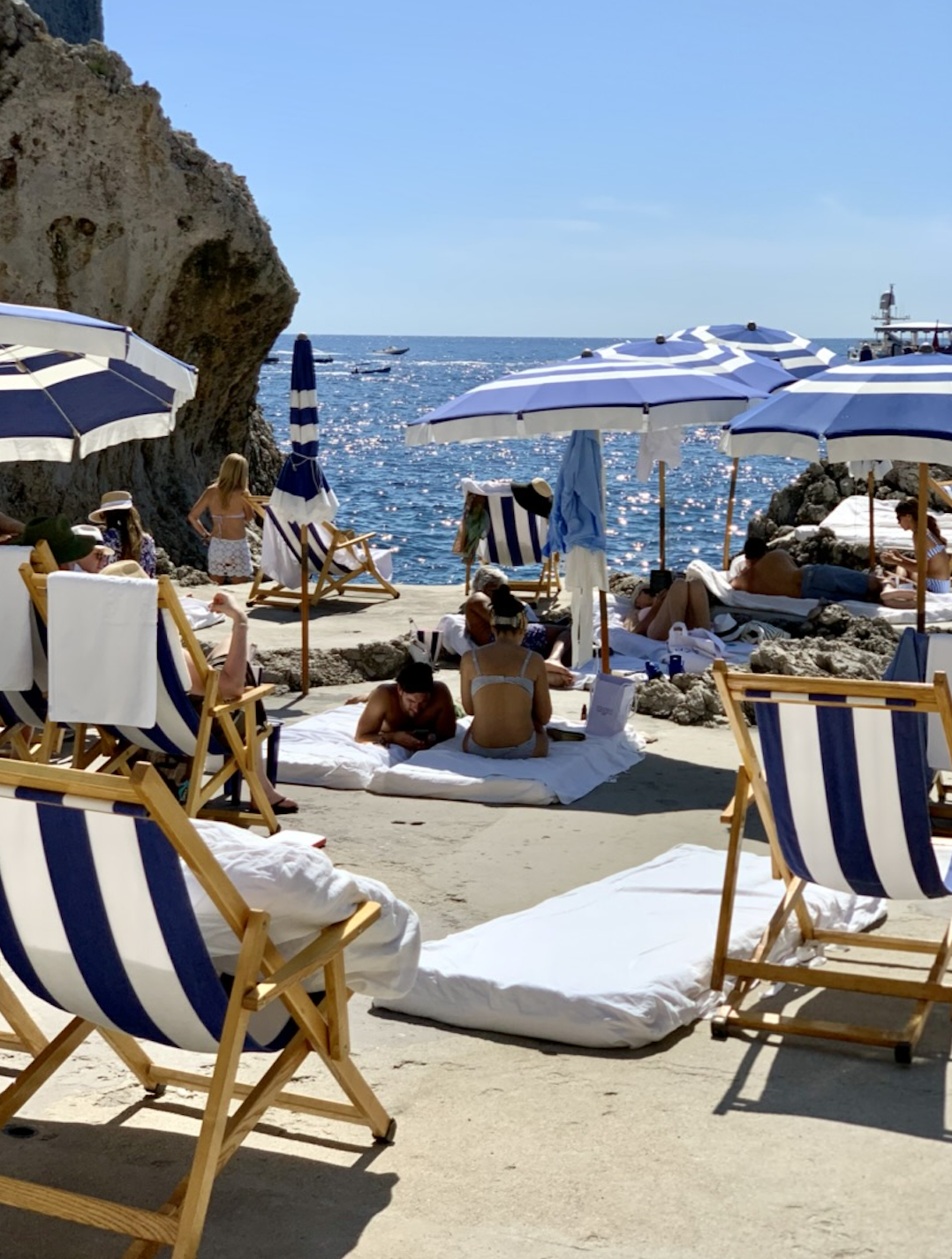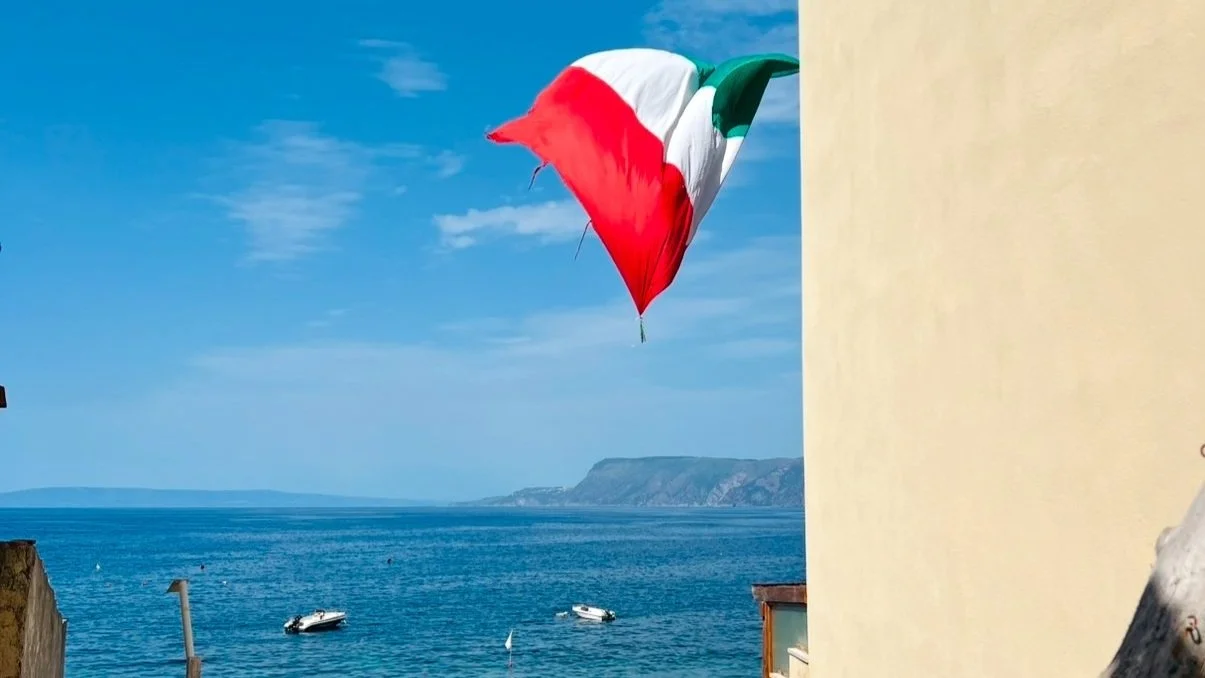ITALIAN SUMMER & ALL IT'S QUIRKY ITALIAN TRADITIONS
Italian Summer: beach etiquette, quirky superstitions, and the celebration of Ferragosto
There is nothing quite like estate italiana. Lazy seaside days, striped beach umbrellas, copious
amounts of caffè freddo, fresh tomato salad, spaghetti alle vongole — the list goes on. If you
didn’t know, Italians take summer and beach-going very seriously. Italy is a peninsula, after all,
with over 7,500 km of coastline and more than 450 islands to pick from. So when August rolls
around, many shops, businesses, and locals shut down, hang hand-printed signs reading
chiuso per ferie, and head out of town for a week (or more) of rest and relaxation. Though times
have changed — with many places and restaurants staying open in busy tourist towns and
major cities like Rome, Venice, or Florence — it’s estimated that the average 3-star hotel now
costs families over €3,500 for a week.
Still, Italians are resilient and will set aside every centesimo to enjoy a bit of fun in the sun.
Below, we’ll explore tips on how to blend in like a local at the beach, uncover some
summer-themed superstitions, and take a peek at how Italians celebrate one of the season’s
most spirited holidays!
Common Italian Beach Etiquette
Pick up where you left off
Although Italy faces a daily waste management crisis in major cities, it takes littering very
seriously, especially in nature reserves and protected beach coves. Throwing a cigarette butt
can cause fines up to 300euros, and pieces of plastic, empty cups, or even a water bottle can
come with a similar price tag. Moral of the story? Throw away your trash!
Dress the part
Wearing swimwear and a practical pair of flip-flops or beach shoes is totally acceptable when
you're on the sand or lounging in your lettino. But when it comes to heading to the beach bar,
restaurant, or even packing up and going home for the day, it's expected that you always cover
up. Don’t be that person who shows up to lunch shirtless! It’s as simple as throwing on a t-shirt
or a pareo (beach sarong) to keep it practical and respectful.
In fact, in some Italian beach towns, it’s actually illegal to walk around shirtless or in a swimsuit
— so it’s always best to follow the local norms and avoid taking the risk!
Bookings and the different types of beaches
In Italy, there are typically two types of beaches: spiagge libere and stabilimenti balneari. If
you're headed to a free beach (spiaggia libera), it’s best to bring towels, a packed lunch, and an
umbrella. Everything you’ll need to spend the day comfortably, since these beaches are
accessible to everyone but don’t offer services.Stabilimenti balneari, on the other hand, are private beach clubs that provide sunbeds,
umbrellas, and additional amenities like showers, snack bars, or even open-air restaurants all
for a daily fee. It’s best to scope out these beach clubs in advance and reserve your spot by
booking in advance, especially during peak summer months as spots are taken up quickly.
Quirky Beach Superstitions
Italians have many superstitions, so many it’s hard to keep count. Don’t expect a stress-free
vacay to come without some beliefs. The biggest one that is country-wide is waiting at least two
hours after eating to take a dip and go for another swim. If lunch time is at two and you finish at
three, Italians believe it is best to wait at least until 5:00 pm to even think about dipping your
toes. Why? Digestion. Italians believe that if your stomach comes in contact with any body of
water after eating, you will face horrible indigestion!
Speaking of water, it is also frowned upon to leave in a wet bathing suit, and don’t even think
about not bringing at least an extra pair of swim trunks for a young child to change into as soon
as they get out of the water. If not, they will get sick! (or so the Italians say). And ice? Another
water-related taboo. It will also pause your digestion. Even on the hottest day of the year, no ice
is best.
Famed Ferragosto
Many Italians strategically book their bed and breakfasts or beachside family-style villas and hit
the road right around one of Italy’s biggest anticipated and celebrated holidays of the year:
Ferragosto. Celebrated on August 15th, Ferragosto is a public holiday dating back to ancient
Roman times. Originally called Feriae Augusti, it was created by Emperor Ottaviano Augustus,
who declared August 1st a day of rest after weeks of hard work in the agricultural sector.
Over the years, although much has changed, the importance of Ferragosto in Italian culture
remains the same. Today, Ferragosto is a moment to relax, unwind, and hit the pause button (for
a day, extended weekend, or even a few weeks) before the chaos of ordinary life begins and the
rientro happens. There are parades, picnics, local religious festivities, and, without a doubt,
hitting the beach.
Author - Gabriela Proietti

